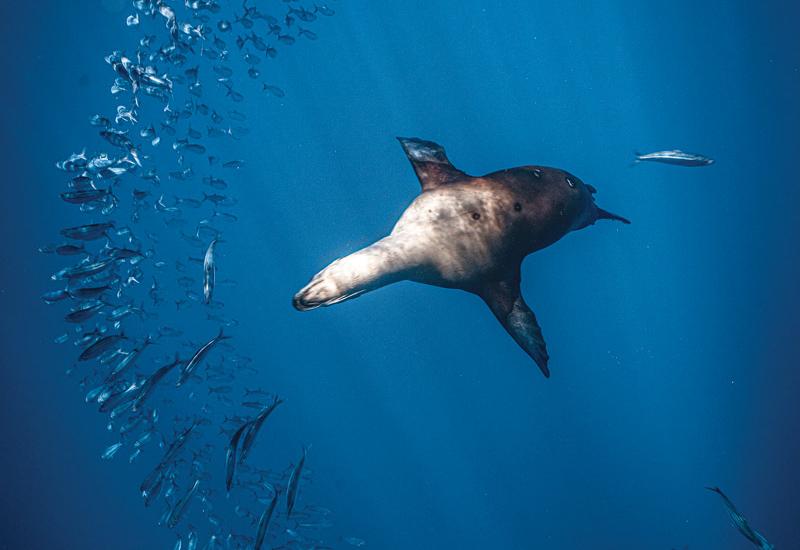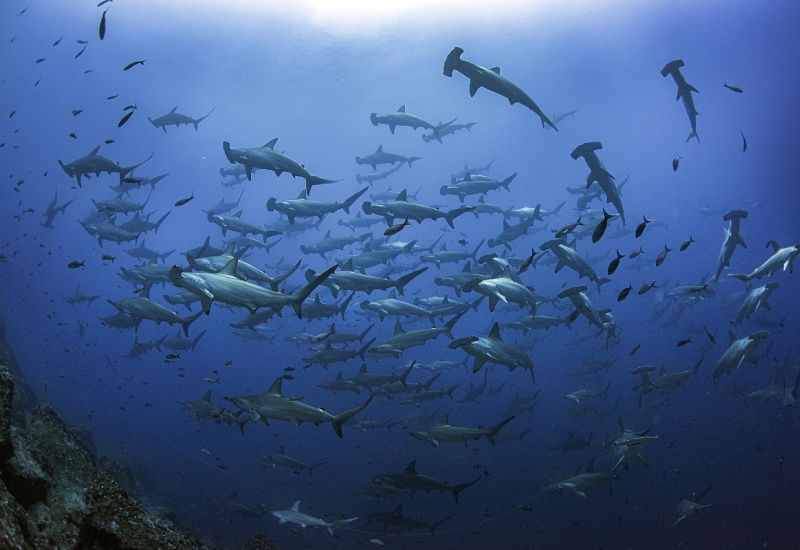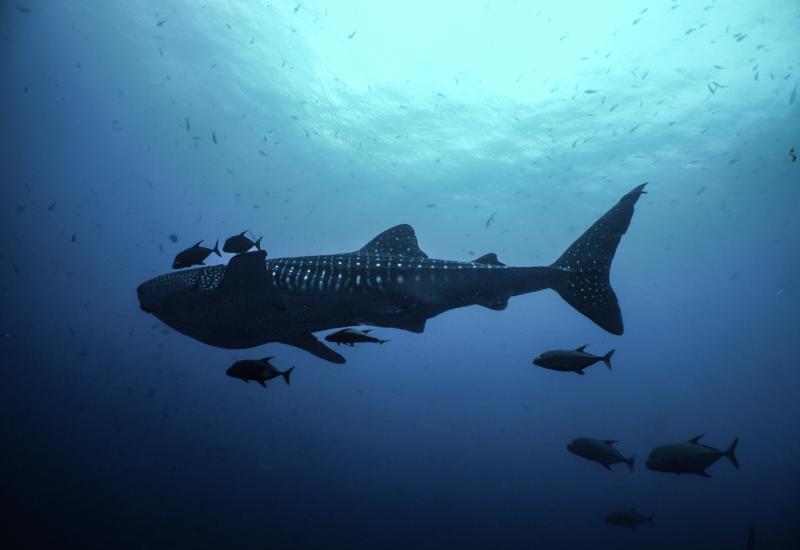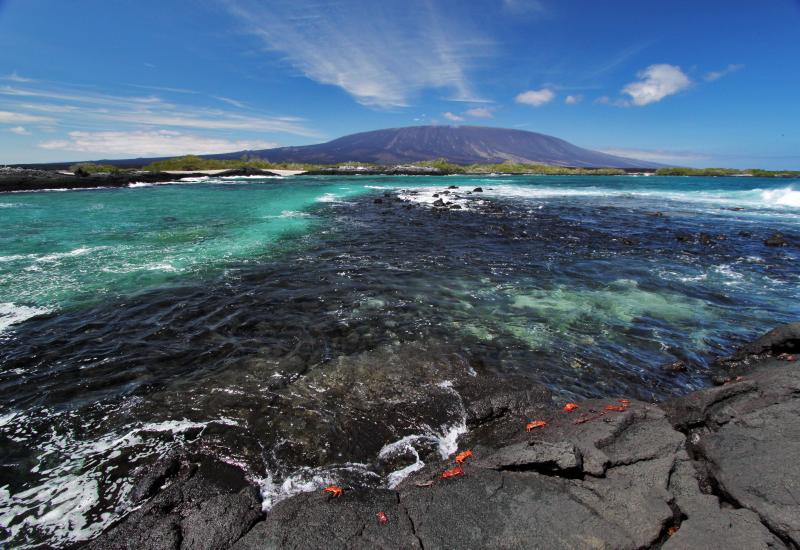Galapagos: Above & Below
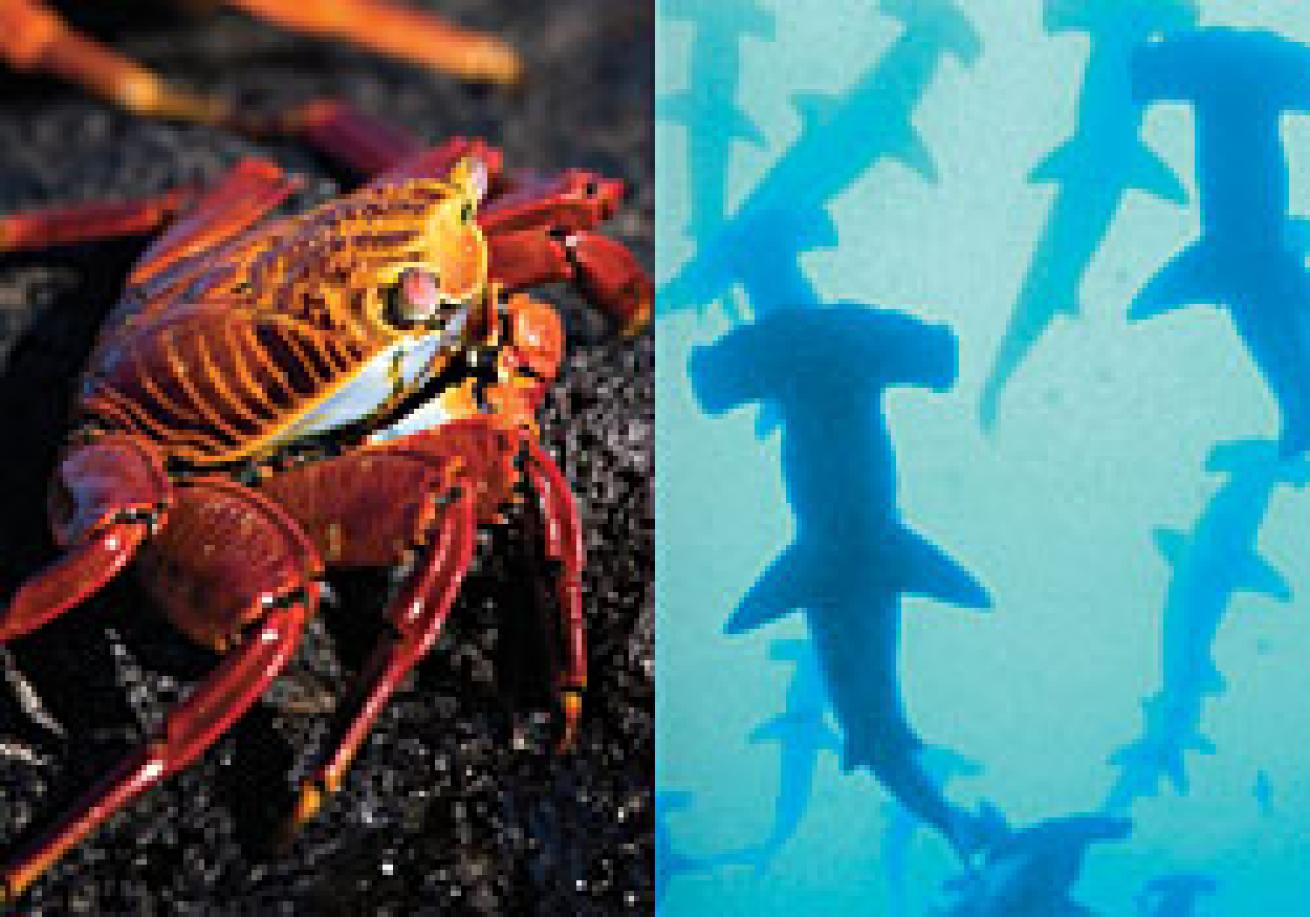
..
I first went to the Galapagos Islands in the early 1990s. These islands — which lie 600 miles off the west coast of Ecuador — are like no others on earth. The diving is unique, in part because the islands are situated at the confluence of seven oceanic currents, which create a marine environment of astonishing wealth and diversity. But it was the unique terrestrial wonders that defined these islands during my first visit. Seeing sea lions, marine iguanas and blue-footed boobies in such abundance was remarkable. I vowed to come back. And return I did, always during February and March (in the early years of dive tourism, this was the "prime season"). But as the live-aboards started to stretch their seasons into summer, they began to have extraordinary encounters, especially off of remote Darwin Island. Suddenly, the summer season became the most popular, and live-aboards were booked two years in advance. I had a new opportunity to experience some of the interactions that this marine wilderness is world-famous for, both above and below the surface.
The Central Islands
The central islands — Fernandina, Isabela, Santiago and Santa Cruz among them — are the most accessible and generally offer the calmest conditions of all the islands in the Galapagos. Some of the islands offer land tours (including Santa Cruz, Bartolome and San Cristobal), where you will encounter marine iguanas, sea lions, Sally lightfoot crabs and the iconic Galapagos tortoise. These islands were the focus of Charles Darwin's research and they remain the stars that draw the tourist paparazzi today. Here, a selection of top dives:
North Seymour Island, Cousins Rock
Razor surgeonfish are to the Galapagos what blue-striped grunts are to the Florida Keys: common on almost every dive. But at North Seymour, a small island to the north of Santa Cruz, they are especially abundant, almost obscuring the massive boulders that dot the bottom at 45 feet. The other iconic species here is the white-tip reef shark, often seen tucked under ledges and in hidey-holes.
Cousins Rock is one of the most photographically productive dives in the central islands. Be prepared, because it may offer some of the best fish and macro opportunities of your whole trip. Along striated ledges that drop from 15 to below 80 feet, you'll find all manner of marine life, including seahorses, frogfish and longsnout hawkfish for the macro enthusiast, and king angel, guineafowl puffer, porcupinefish and giant hawkfish for fish shooters.
On our dive, I encountered a school of black-striped salema that was very likely the largest school of fish of any kind that I've ever seen. I swam up to the leading edge, hoping they wouldn't dart away. Suddenly, the light went almost black, and I was surrounded by thousands and thousands of fish. I had a 50mm macro lens with me, but I wished I'd had something wider to convey the enormity of this congregation.
Isabela & Santiago Islands
The main attractions at Isabela, the largest of the central islands, are the manta rays that swim just offshore. They are tough to get close to, however. Isabela is not like Socorro, where you are almost guaranteed to shoot mantas at close range, but any time you're in the water with mantas is special indeed. Another photogenic attraction is the sea lions that play in the white water along the shoreline. During our dives here, we also encountered large, solitary yellowfin tuna swimming just overhead. The anglers in our group had traveled the world to try their luck with these pelagic cruisers, but always in deep water. They were amazed to see them just off the shore break.
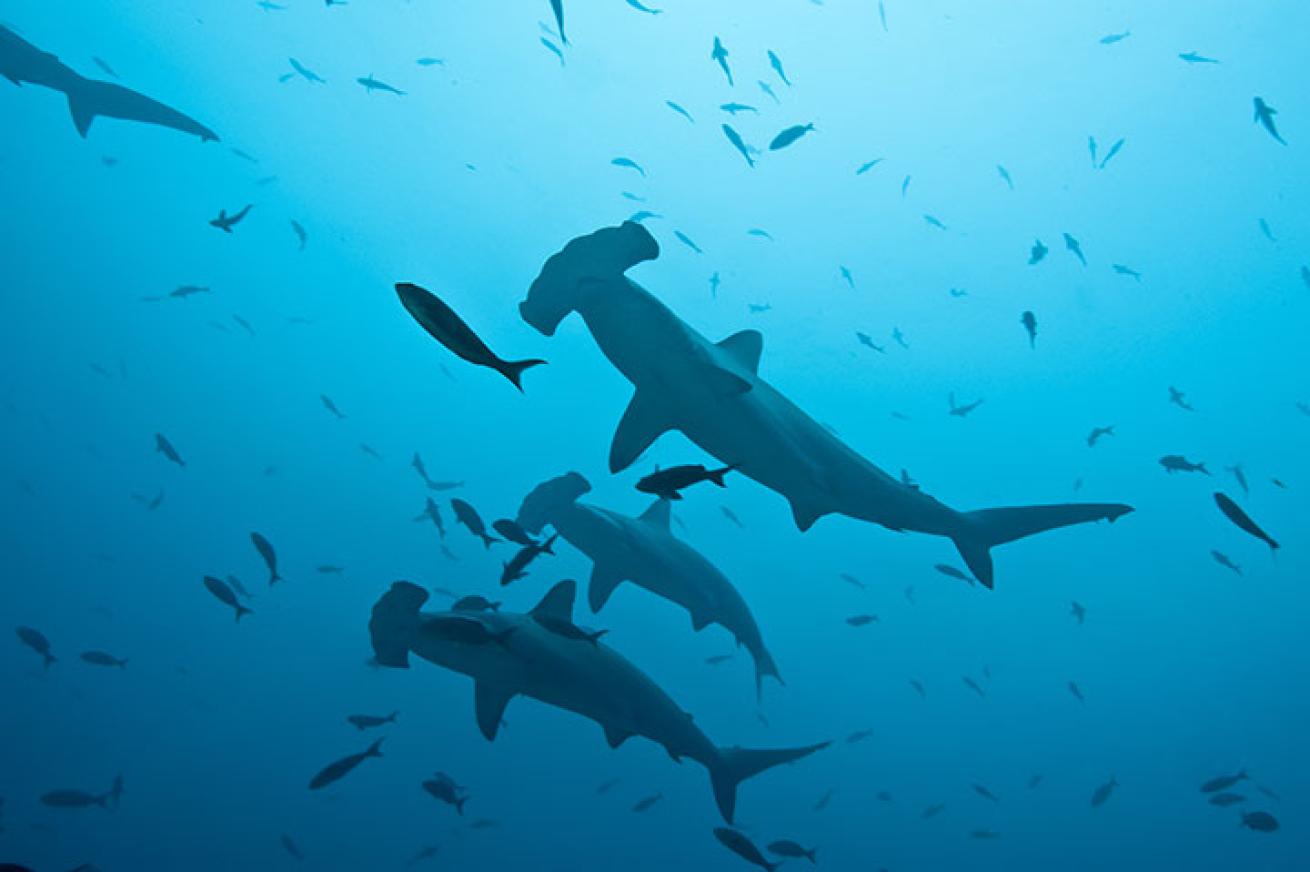
ShutterstockNo. 61
Hammerhead Sharks, Galapagos
Best Big Animal Encounters
Don't miss the opportunity to take a land tour on Santiago Island. We hiked along the shoreline among massive numbers of marine iguanas and crimson Sally lightfoot crabs. Lava herons and American oystercatchers work the shallows, looking for small crustaceans, and sea lions and Galapagos fur seals contribute to inspired photographic compositions.
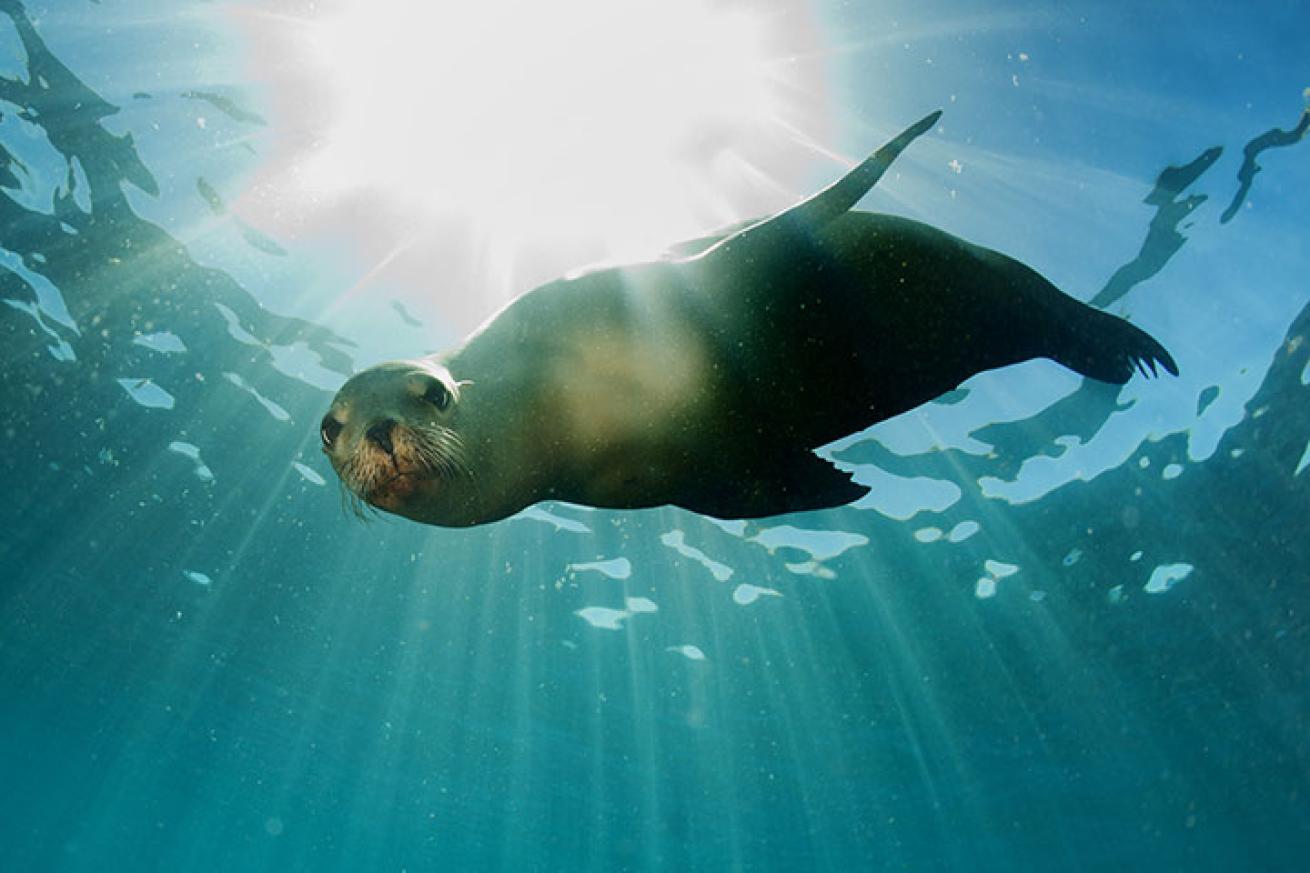
ShutterstockGalapagos sea lions breed exclusively in the islands and in Ecuador. They are an endangered species.
After sunset, we did a night dive off Santiago. We descended to a flat sea bottom at 45 feet, looking for red-lipped batfish. During the dive we spotted more small octopuses than I'd ever seen on a single dive. I kept seeing the divemasters flash their night lights to signal they had found something special, and I'd swim over to find them pointing at yet another octopus. There were also fascinating macro critters along the rubble bottom, but for whatever reason, the batfish were absent from this portion of seafloor.
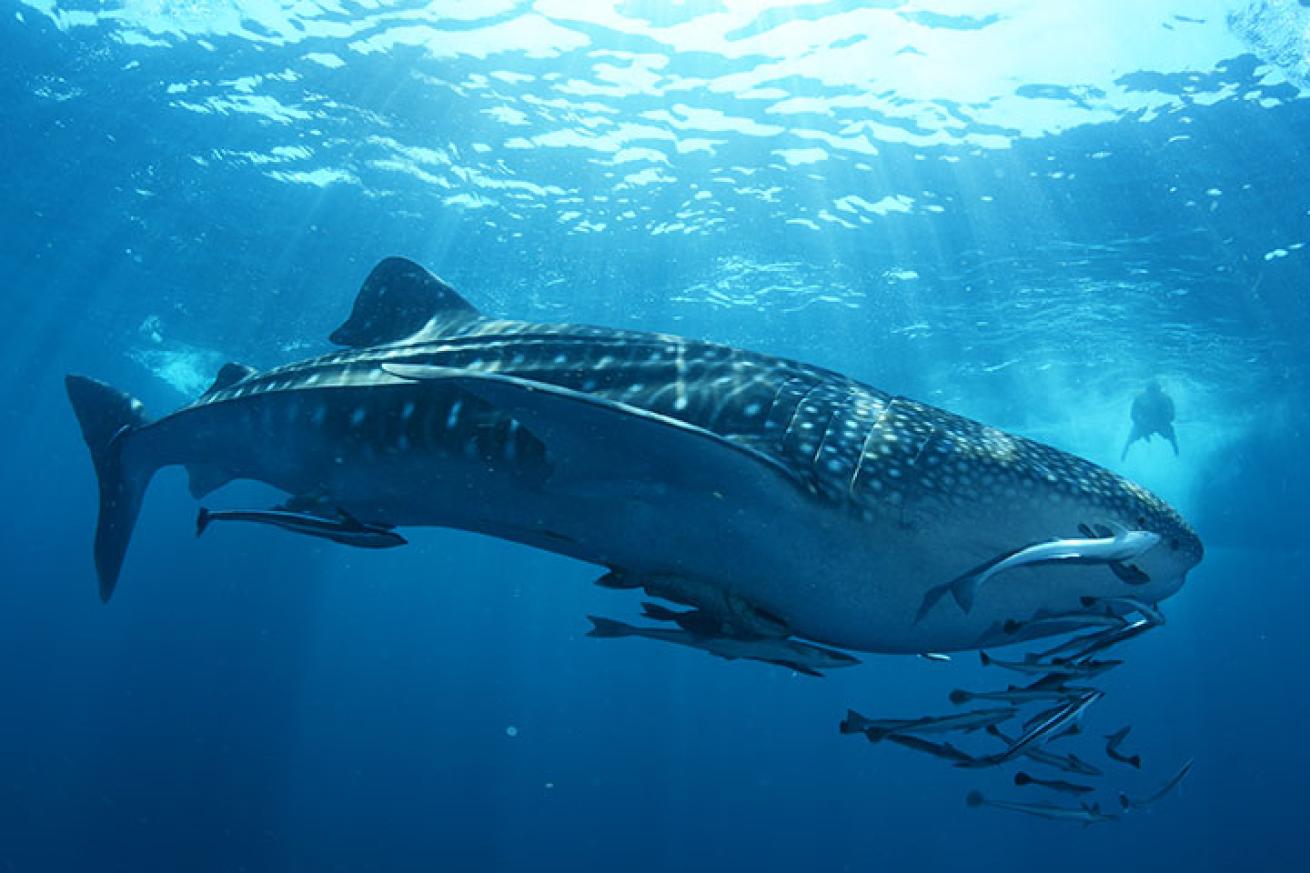
ShutterstockWhale shark season in the Galapagos is from June to November.
Santa Cruz, Gordon Rock
Gordon Rock stands alone off the east coast of Santa Cruz, a collapsed volcano where the sea can pass with occasional high-velocity current and surge. Not so on our dive, but the pelagic life typical of Gordon Rock was there en masse. A dozen hammerheads kept sweeping the seafloor at about 105 feet, and eagle rays swam in parallel formation. For me, the big attraction was the large congregation of king angelfish. We saw king angels on almost every dive in the Galapagos, but at Gordon Rock there can be 20 to 30 angelfish in one cluster. Of course, when they are feeding they are random in posture, making attractive compositions difficult. Other highlights of Gordon Rock included a school of pelican barracuda and the omnipresent creolefish.
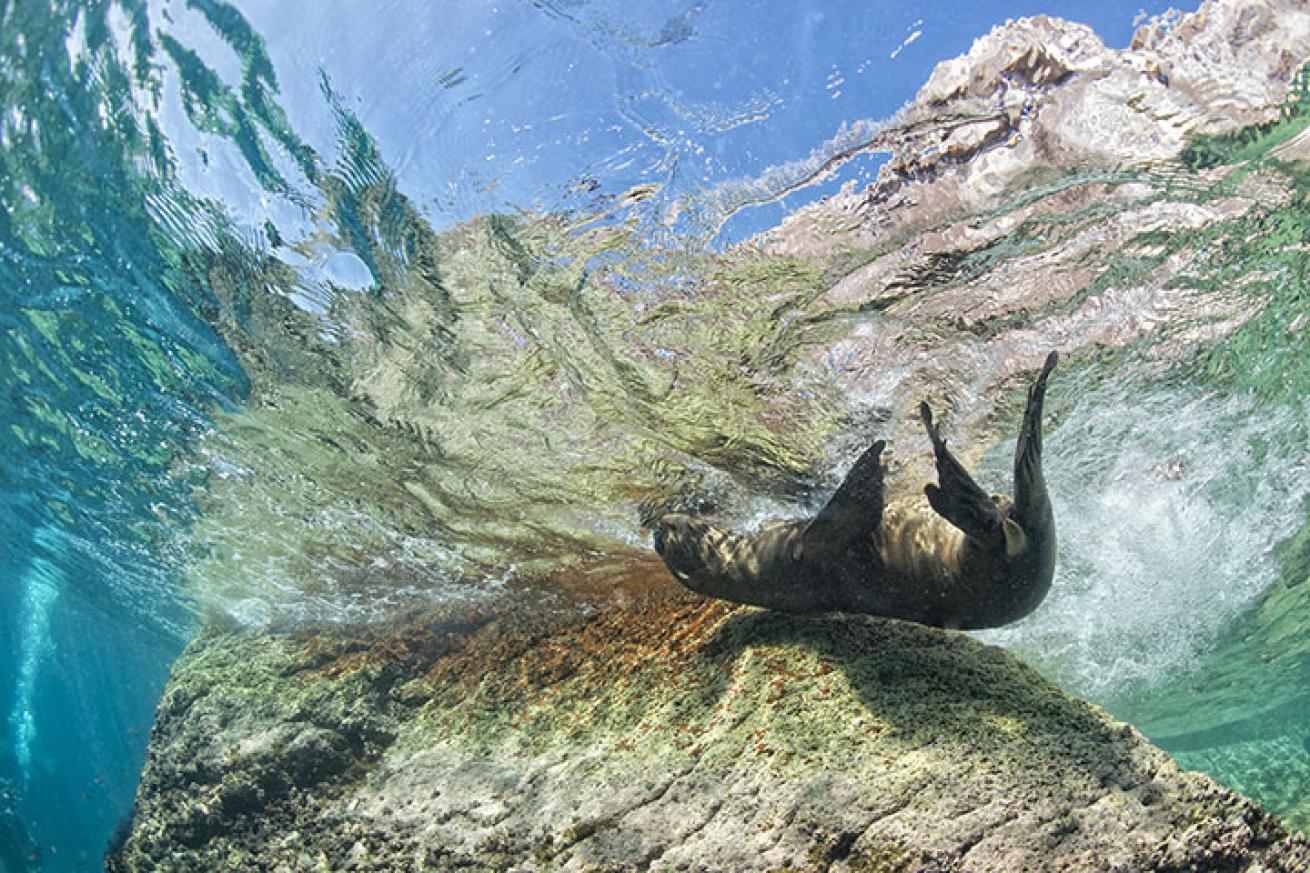
ShutterstockSea lions are fairly social animals and playful in nature.
I wished I'd taken a macro lens with me, because I'd never seen so many barnacle blennies in a single area before. Without going below 30 feet, a dive could be well spent just looking at the tiny creatures that inhabit the rocky walls at Gordon. In fact, a macro shooter could have a terrific time throughout the Galapagos, but the wealth of bigger, dramatic marine life makes it tough to concentrate on the tiny cryptic creatures that inhabit this extraordinary marine wilderness.
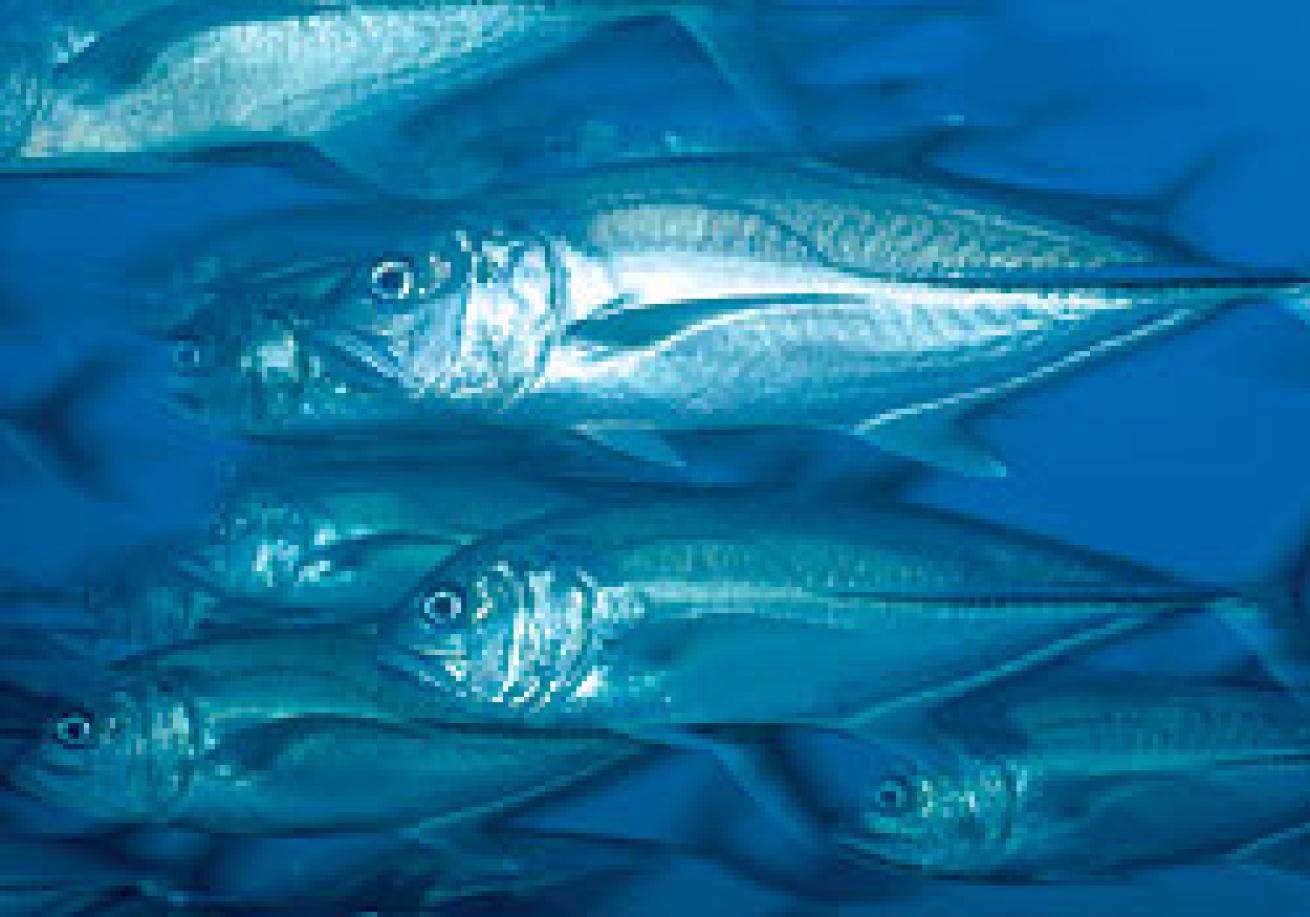
Stephen FrinkEncountering a large school of bigeye trevallys on Wolf Island.
The Northern Islands
Located a 12- to 14-hour boat ride to the north, remote Wolf and Darwin are restricted from land tours, but the celebrities are submarine anyway. Here, you're likely to find concentrations of hammerheads, typically warmer water, and the Brad Pitt of piscine encounters: the whale shark, which makes its appearance between April and November.
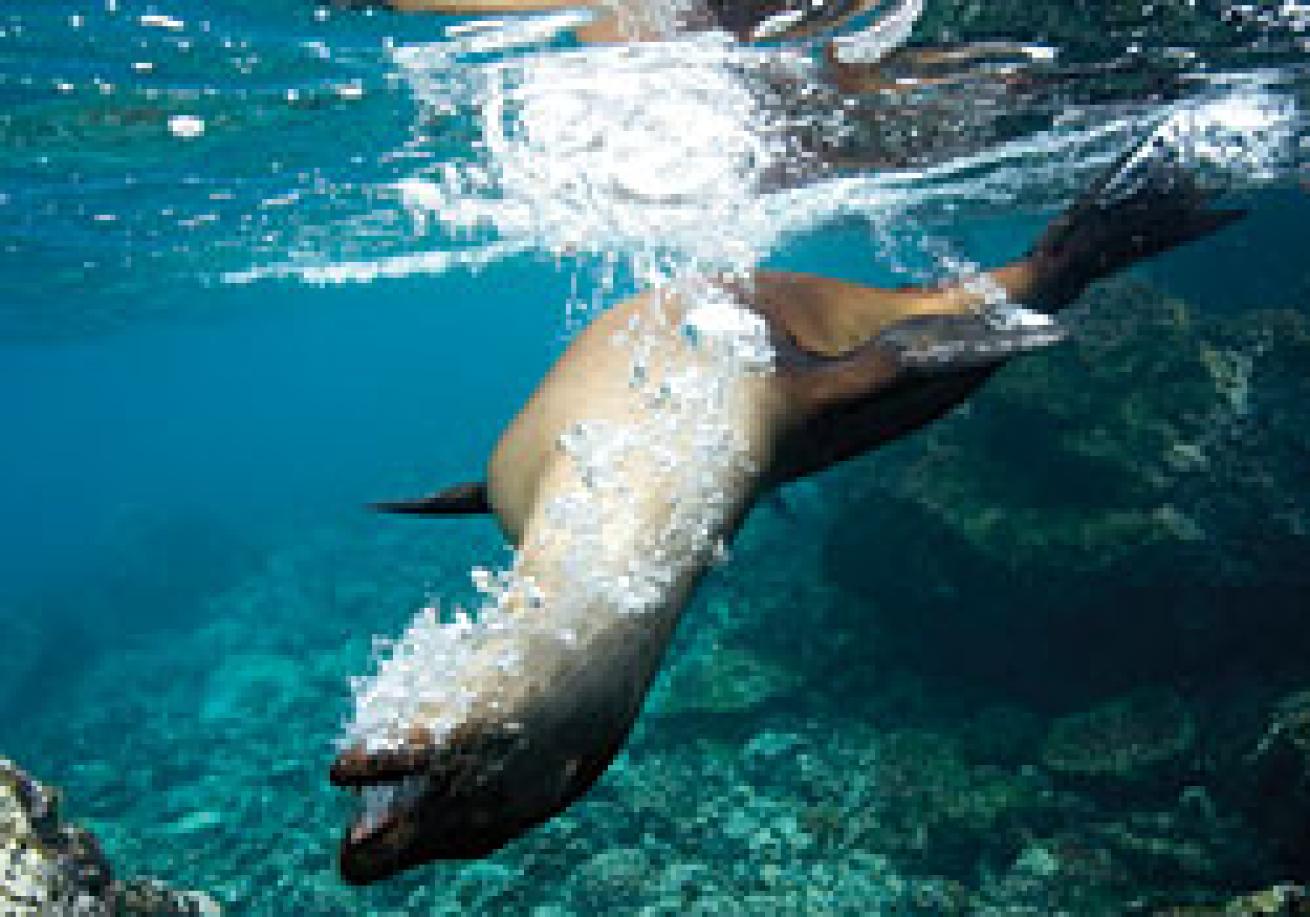
Stephen FrinkOn Isabela, sea lions play along the shoreline.
Wolf Island
We cruised northward overnight, with Wolf Island coming into sight in the morning's first light. Our first dive was at an area called Landslide, the best place to find hammerheads. Here, a sloping boulder-strewn reef drops from 15 to 90 feet, before it plunges to depths way beyond prudent exploration. Most of our dives were in the 40- to 75-foot range, and there were plenty of reef fish. The omnipresent king angels and razor surgeonfish were here, but there was also a large school of bigeye trevally to lure us into the blue. Along the reef are plenty of guineafowl pufferfish, giant hawkfish, fine-tooth morays and hawksbill and green sea turtles.
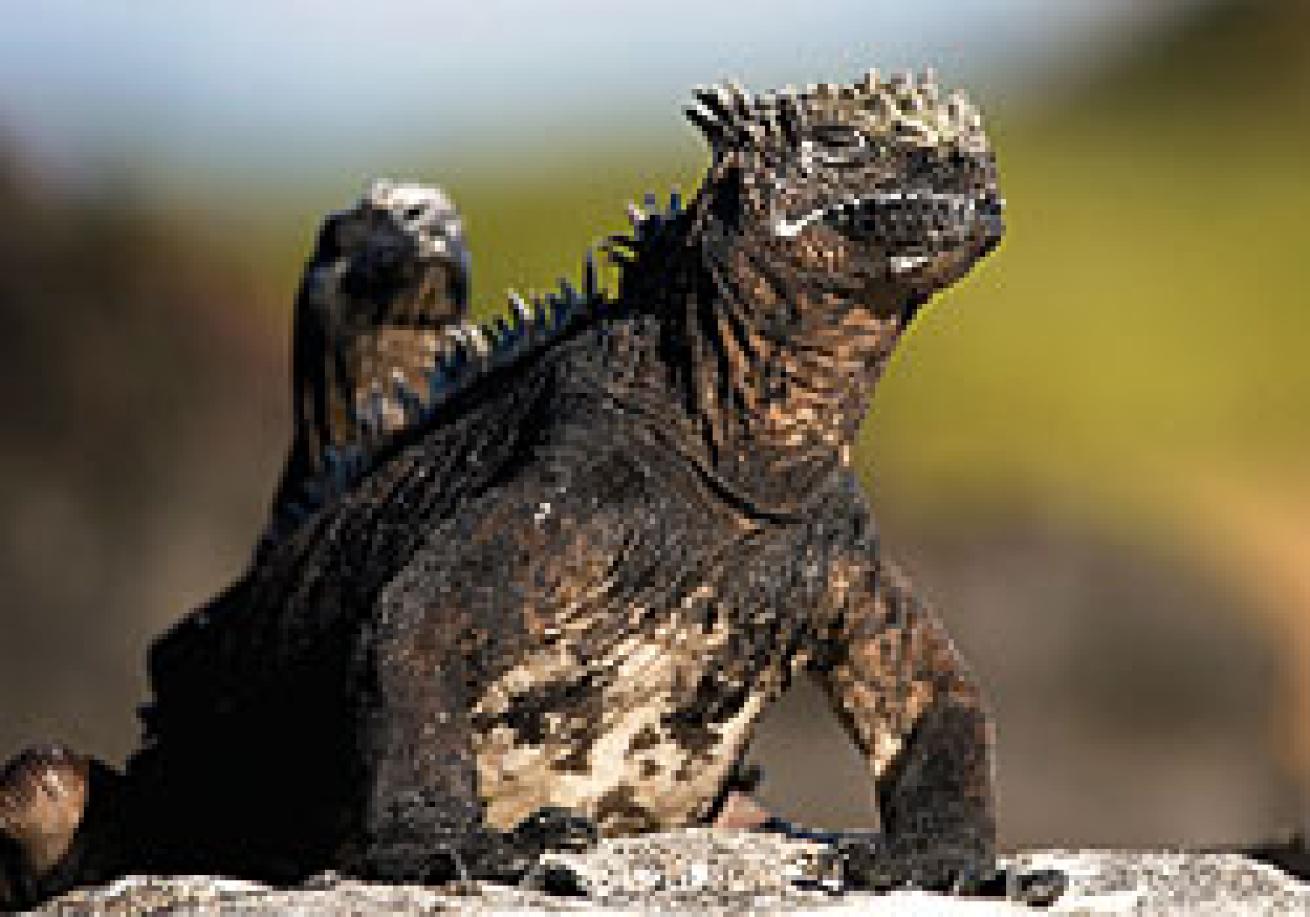
Stephen FrinkIf your live-aboard is permitted land tours, you may encounter marine iguanas.
Yet it is the hammerheads we came to see, and we saw them on all four of our dives here. I found myself wishing for more and closer encounters, but hammerheads are wary by nature. I had one fly-by close enough to capture a reasonable image with my 50mm macro lens. Somehow, it always seemed that the moment I stopped staring off into the blue watching for hammers and caved into the temptation to photograph the reef life so tantalizingly near, that would be the exact moment a shark would swim by.
There is another part of Wolf that is quite interesting. I call it the Pinnacle, because there is a pinnacle near the end of the dive that tops out at about 20 feet and plummets to 120 feet. Others call it the Washing Machine, because you feel like you've been through the spin cycle when the current spits you out just past the pinnacle. Nearby is a fascinating wall with a gentle drift past marble rays and a couple of large caverns populated by a dozen or so white-tip reef sharks.
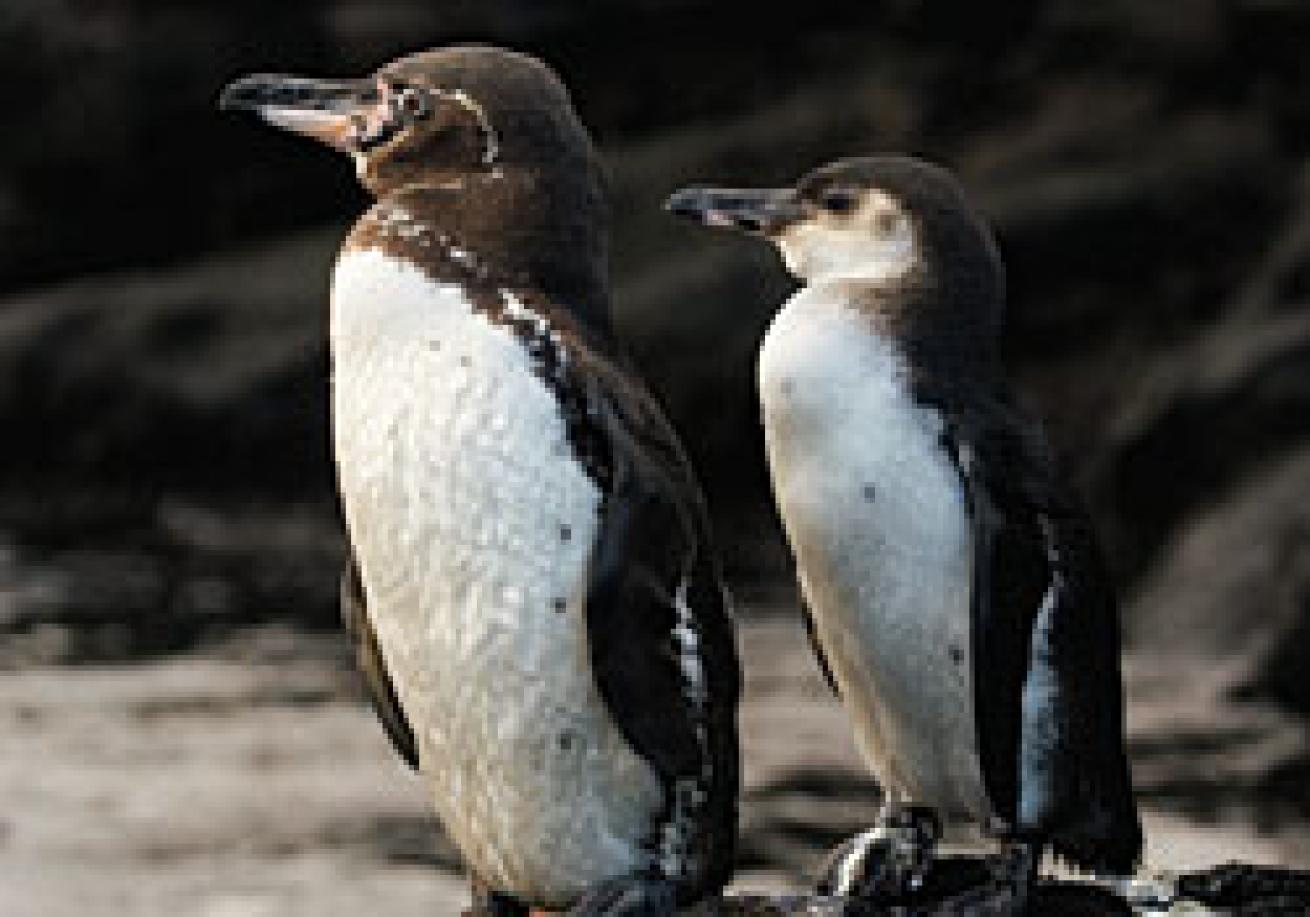
Stephen FrinkThese penguins are endemic to the Galapagos and are the only penguins that live north of the equator in the wild.
Darwin Island
At Darwin Island, about two hours north of Wolf, there is really only one place to dive. Just to the north of the massive arch that defines Darwin's topography is a submerged ledge in the 50- to 70-foot range. On any given dive, sightings might include bigeye trevally, creolefish, moray eels, turtles, king angels, barberfish, triggerfish and Peruvian grunts. Anyone macro-inclined will see all manner of gobies and blennies along these rocks as well, but it takes discipline to turn away from the pelagic creatures patrolling the near blue and peruse the barnacle-encrusted rock face instead.
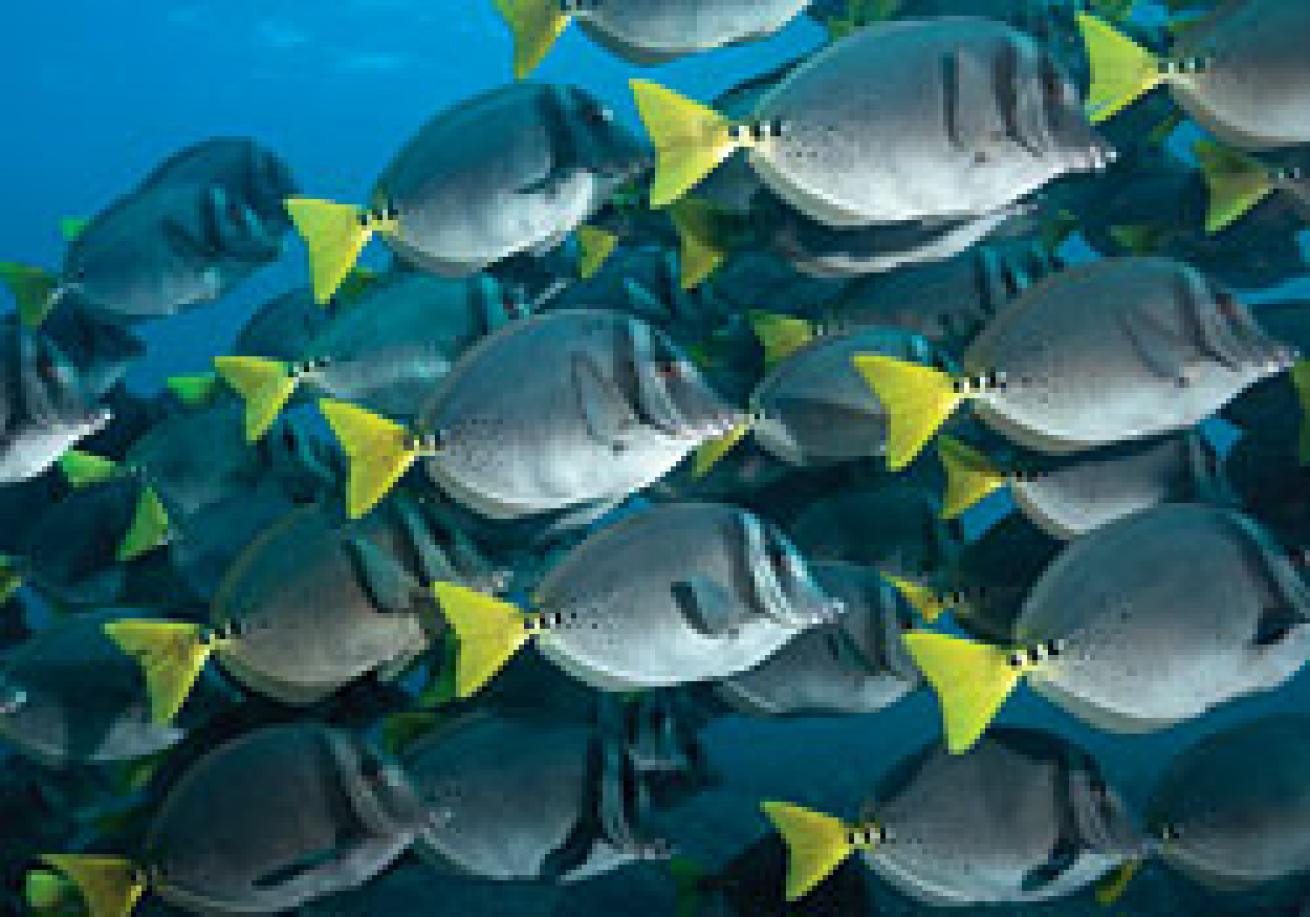
Stephen FrinkRazor surgeonfish are to the Galapagos what blue-striped grunts are to the Florida Keys: common on almost every dive.
We made six dives at Darwin, some with gentle current, but others with a flow that raged so hard it was difficult to lift a camera into position. We saw a lot of inspiring life, but we did not see a whale shark. Fair enough. We knew that whale sharks — the marquee attraction for the Galapagos this time of year — were not a slam-dunk guarantee. These are semi-random happenings that can depend on the moon or the current or the water temperature or personal karma. (And after we got home we learned that the whale sharks did finally show up at Darwin, but they came later than usual.) Plus, seeing a whale shark is not the same as getting close to one long enough to render a quality photograph. So, truth told, I wasn't too disappointed that we didn't see a whale shark. And what we did see was so spectacular it made the trip well worth it. And with that rationalization firmly embedded in my psyche, we began our long journey home, making a final stop at Wolf to try again for the ultimate hammerhead shot.
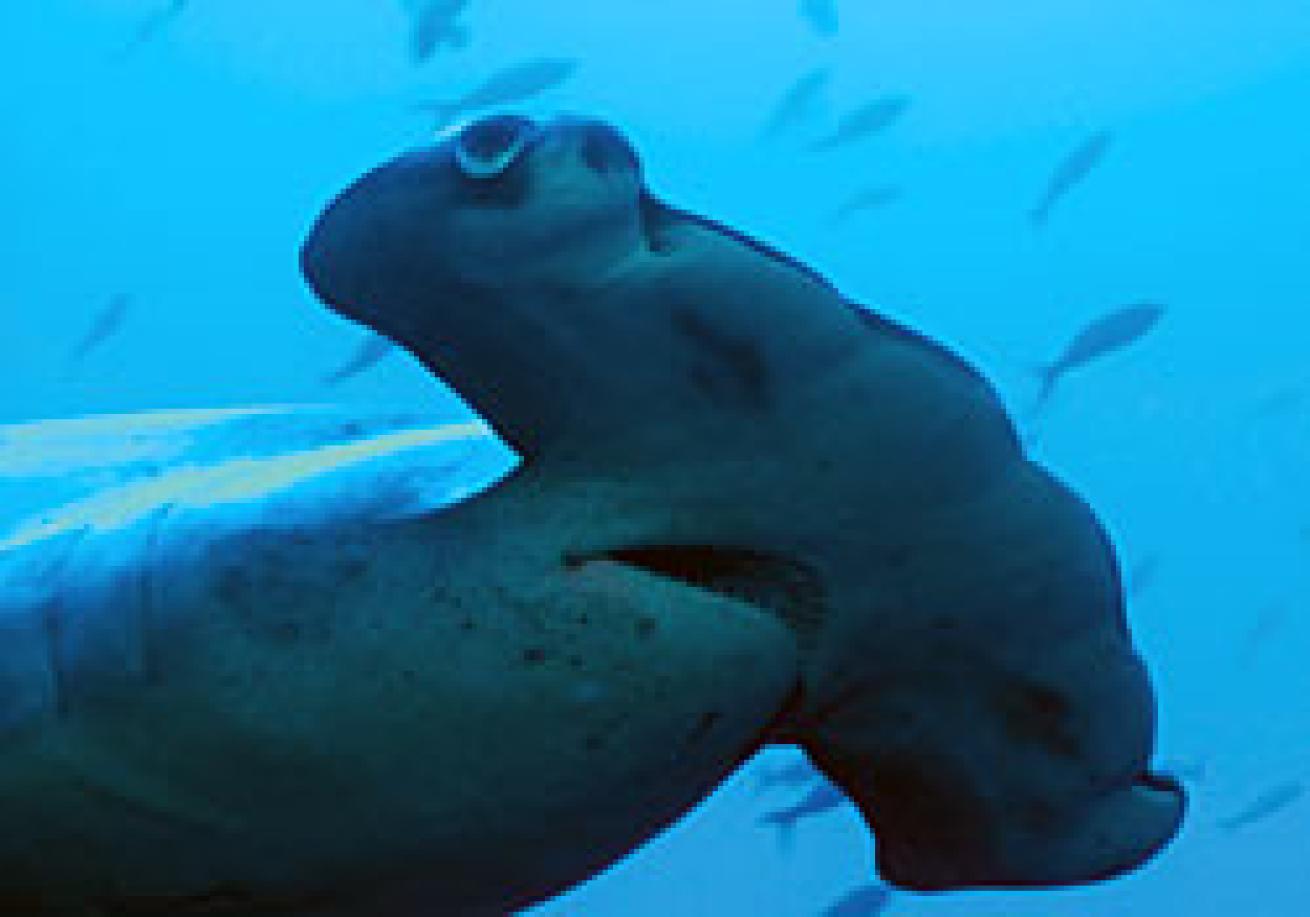
Stephen FrinkSmaller than great hammerheads, these sharks are still wondrous to see on dives in the islands.
InDepth
Water and Weather: Galapagos diving is for intermediate and advanced divers only due to cool water (60 to 80 degrees), sometimes challenging visibility, and formidable currents and surge. June to December, the garua season (garua is the Spanish word for mist), is cooler and drier above water; air temps average 65 to 75 degrees. Seas tend to be rougher, and vis lower (20 to 80 feet), but plankton means more big animals, including whale sharks. It's also peak time for mating birds and sea lion pups. January to May is the warm season with air temps 75 to 85 degrees. Seas are calmer and vis is better (40 to 100 feet).
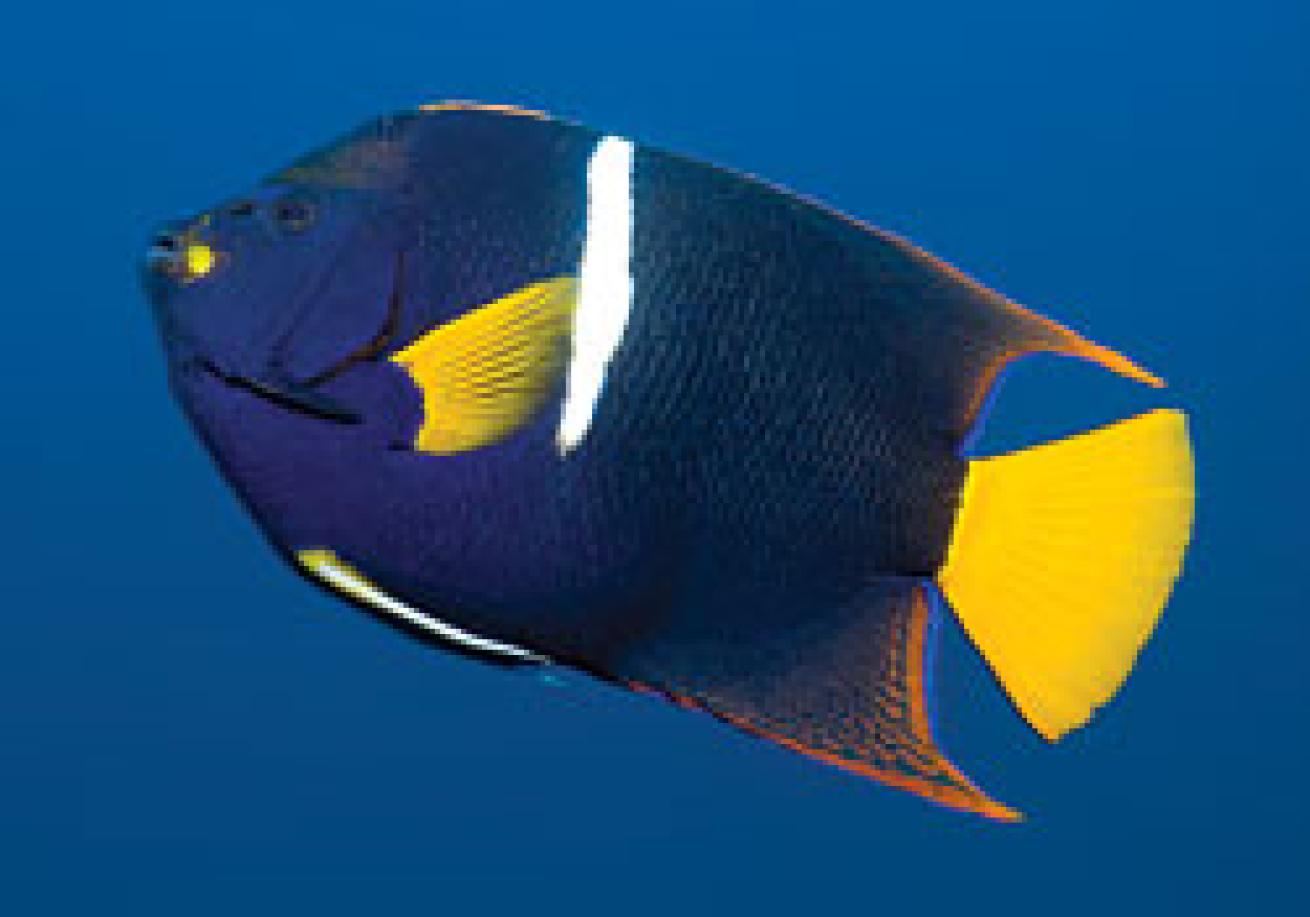
Stephen FrinkWe saw king angelfish on almost every dive in the Galapagos, but at Gordon Rock there can be 20 to 30 angels in one cluster.
Getting There: International flights to Ecuador land at either Guayaquil or Quito. (The air schedules require an overnight stay on the mainland at both the front and back ends of a Galapagos tour, so plan on two nights in hotels.) From either city, it's a two-hour flight to the Galapagos.
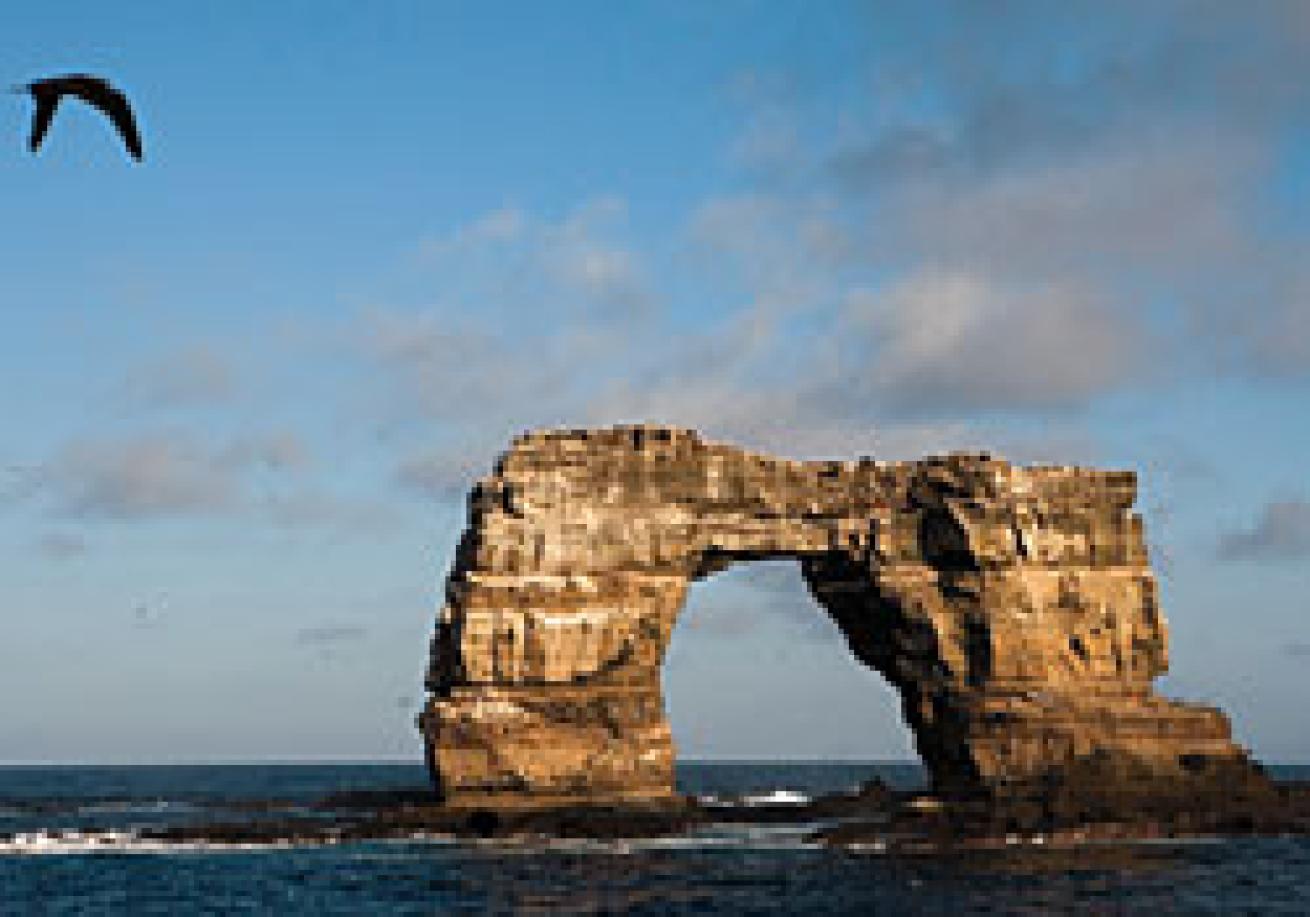
.With no dry landing sites, Darwin Island's main attractions are found in the ocean, which is teeming with fish and marine life like hammerheads and turtles.
Getting Around: With 13 large islands and more than 100 islands and islets scattered over 140 miles north to south, live-aboard expeditions are the way to dive Galapagos: Galapagos Aggressor III.
Travel Reminders: U.S. and Canadian citizens need a passport, but not a visa. There's a $100 national park entry fee (payable in cash only), and a departure tax leaving Ecuador.
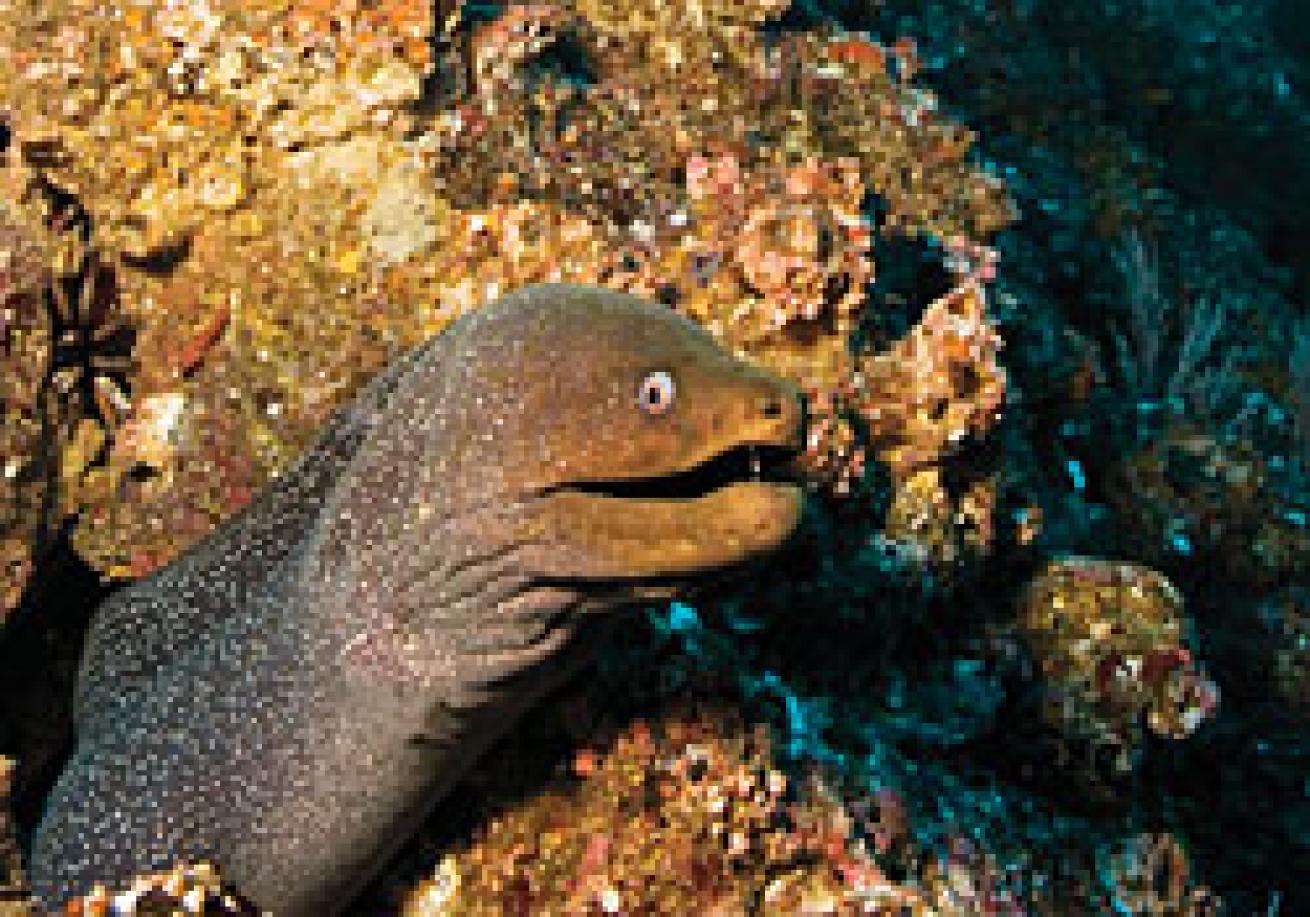
Stephen FrinkSpotted morays are solitary animals, and are usually seen in holes, with only the head protruding. You should find them at Darwin's Arch.

